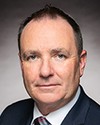Yes, there is still a gap, but it is slowly closing, I would argue.
First, we need to realize that a majority of our members are releasing in areas where there are lots of members releasing, because they usually live near a base or wing. The community gets familiar with our members as a result of that. They see more of our veterans, I guess, in those locations.
That is not the case, obviously, when a member decides to release remotely. That is where we have challenges. In order to address those challenges, we recently worked with Veterans Affairs and the College of Family Physicians of Canada to develop a best-advice guide, as they call it, to help family doctors in the community better understand what it is to be a veteran, what our military members are going through in their career area, what kinds of stressors they are exposed to, what types of conditions they develop as a result of those stressors, how best to take care of them and what resources are available to them after release. That goes for the different supports and health care resources available. Therefore, family doctors out there are able to make sure veterans are offered the best support possible, wherever they are in the country.
Are there still gaps? Of course there are still gaps, but I believe we are moving toward improvement. My colleagues in Veterans Affairs are definitely making a lot of effort to try to address that.




